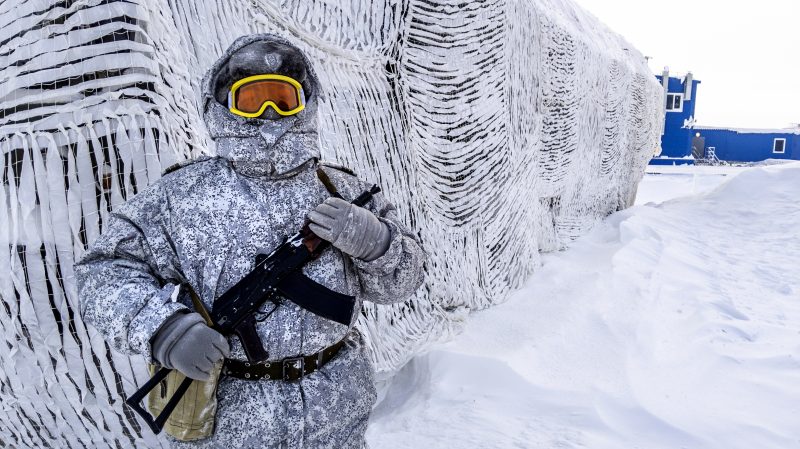Russia’s glossy Arctic army base on guard for enemies and bears
When the first men were deployed to the site, they were confronted by curious polar bears (Maxime POPOV)
Kotelny Island (Russia) (AFP) – Far above the Arctic Circle, a futuristic army complex equipped with a gym and year-round hot water serves the needs of Russia’s Arctic troops.
Moscow built the military base on the remote Kotelny Island — part of the New Siberian Islands in the eastern Arctic — in record time after realising the strategic and economic potential of its northern frontier.
It is romantically named the Northern Clover and can house 250 troops, who sport a special white polar uniform.
“The Northern Clover is the first permanent facility for the Russian armed forces where they can live autonomously,” said Vladimir Pasechnik, the commander of the Northern Fleet’s tactical unit, as he showed off the tightly-controlled facility to journalists this week.
“Our water and food reserves can last a year,” he said.
From space, the building looks like a massive three-pronged star coloured in the red, white and blue of the Russian flag. It is meant to serve as an example for future garrisons in places with extreme temperatures.
The site was once a Soviet military base, abandoned like many Arctic outposts in the early 1990s. But in 2014, President Vladimir Putin made the region a strategic priority for Moscow, sparking a construction boom.
When the first men were deployed to the site, they were confronted by polar bears curious about their new neighbours, said Yevgeny Kaziyev, commander of the locally-deployed Bastion coastal defence battery.
“Once we were settled, they retreated from the base and don’t bother us,” he said.
– Polar ping-pong –
During the construction phase, all material was airdropped to the island as the old landing strip could not accomodate cargo planes. The island’s average annual temperatures are around -15 degrees Celsius, dropping below -50 in the winter.
“Even though the conditions outside are difficult, we dress warmly and our equipment allows us to carry out all the necessary tasks,” said the base’s second in command Rinat Uformanov.
Keen to attract volunteers, the Russian military advertises its modern facilities that include ping-pong and billiard tables, a sauna, a cafeteria and a gym with all kinds of training equipment.
There is no internet or telephone but the soldiers have all the hot water they need, thanks to a snow-melting and heating system developed for Arctic units that stores up to 20,000 cubic metres of water for the winter period.
While the Northern Clover is the first to be shown to foreign media, other installations have also appeared in the Arctic, including the Arctic Trefoil on the Franz-Joseph Land archipelago which houses 150 troops.
– Unlocking ice routes –
In 2017, the Russian military announced it had discovered 11 new islands and six new straits in the Arctic.
The move followed Russian efforts to stake claim to the hydrocarbon-rich Arctic shelf, which has been contested and is currently under review in the United Nations.
Russia is one of five Arctic nations staking their claims in the region, subject of next week’s upcoming forum in Saint-Petersburg, a high-profile event Putin has hosted five times since 2010.
Climate change has opened up hitherto ice-locked naval routes and Moscow has seized the economic opportunity, with Putin tasking the government with increasing cargo traffic through the Northern Sea Route to 80 million tonnes by 2024.
The route can reduce travel time between Europe and Asia by 40 percent. It is being used commercially after a large container ship navigated it in 2018 to deliver frozen fish from the Russian Far East to Germany.
Russian energy companies Novatek and Rosneft have said they are considering using the Northern Sea Route — also known as the Northeast Passage — to transport oil and gas to their markets.
Environmentalists say this economic frenzy could devastate the region’s delicate ecosystems, already on the brink of destruction from warming.
Breaking up ice with icebreakers disturbs seal populations which polar bears rely on, for example.
On Kotelny Island, commander Pasechnik said the military is doing its part for the environment, clearing the rusty remains of Soviet bases that have polluted the tundra.
“Up until 1993, oil was delivered in metal barrels, and a lot of them have accumulated here, threatening the environment,” he said. “The command decided to clean it up.”
Disclaimer: Validity of the above story is for 7 Days from original date of publishing. Source: AFP.


